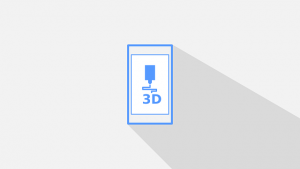
By now, you’ve probably heard of 3D printing. It’s become an increasingly popular manufacturing process that’s used in both commercial and consumer applications. 3D printing is designed to build objects by depositing layers of material onto a printing bed. However, there are probably some things you don’t know about this manufacturing process and how it works.
#1) Proposed During the 1970s
While 3D printing took off during the 1990s, it was originally proposed several decades earlier in the New Scientist technology journal. In this article, David Edward Hugh Jones described how a printing machine could build objects from a computer-generated model file.
#2) Multiple Materials
Some 3D printers are able to build objects using multiple materials. Known as multi-material 3D printers, they overcome the limitations of their single-material counterpart. If a manufacturing company needs to build an object using two or more materials, a multi-material 3D printer can work. Each of the materials is designated for a pixel element within the object, which the multi-material 3D printer carries out.
#3) 3D Scanners
Most 3D printers work in conjunction with computer-aided design (CAD) software, which is used to design the object model. Others, however, work in conjunction with a 3D scanner. 3D scanners open the doors to a new world of 3D printing applications by allowing users to take photos of real-world objects for printing. Rather than designing an object model in CAD software, a user can simply take a photo of a product he or she wants to reproduce, after which the photo can be scanned using a 3D scanner.
#4) Pen-Style 3D Printers
When you think of 3D printers, you probably envision conventional-sized 3D printers that resemble a large paper-based printer. With that said, 3D printers are available in a variety of sizes. Some, in fact, are as small as a pen. These pen-style 3D printers aren’t particularly useful in the manufacturing industry, but they’ve become a popular choice among hobbyists, many of whom enjoy the convenience of being able to build objects using nothing more than a pen.
#5) Highly Efficient
Unlike other manufacturing processes, 3D printing is highly efficient. Since it builds objects layer by layer, it produces little or no waste. 3D printers only release material where it’s needed. As a result, there’s virtually no waste produced.
#6) FFF Is the Most Popular Method
Although there are many different 3D printing methods available, none are more popular than fused filament fabrication (FFF). According to one survey, it’s used by 99% of respondents. FFF is a 3D printing method that uses a thermoplastic or polymer filament to build objects.
Do you have a prototype that has been stuck in your head? We can help get it out of your head and into your hands with our 3D printing portal.
